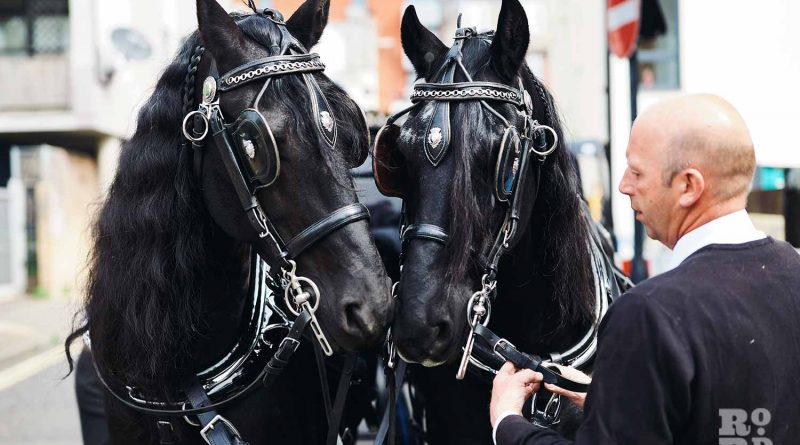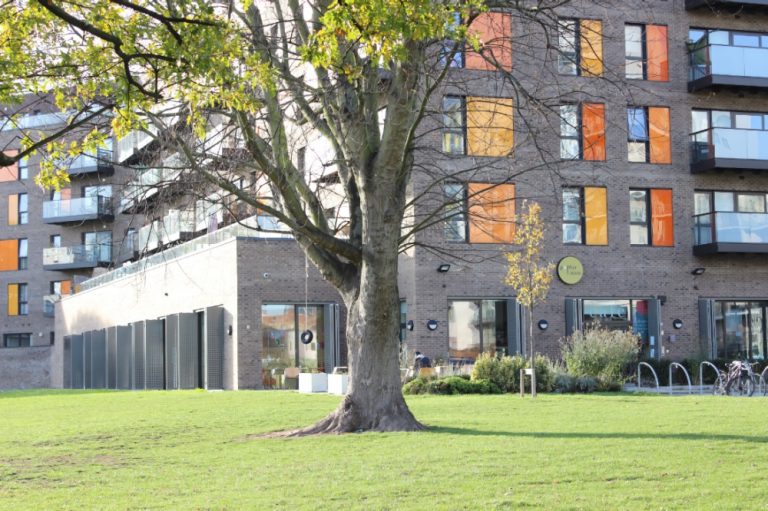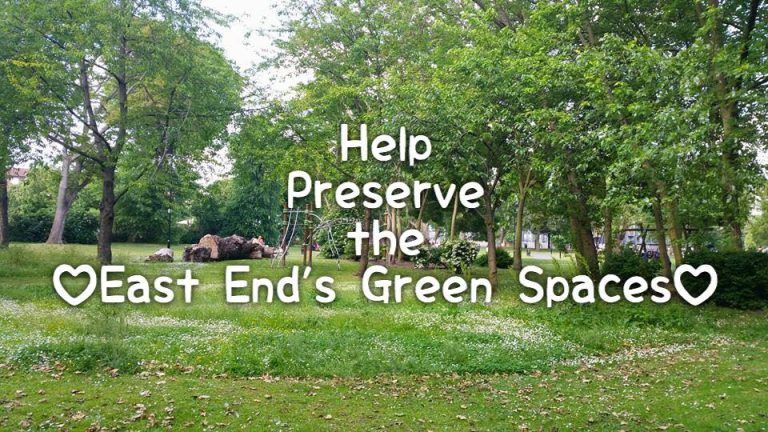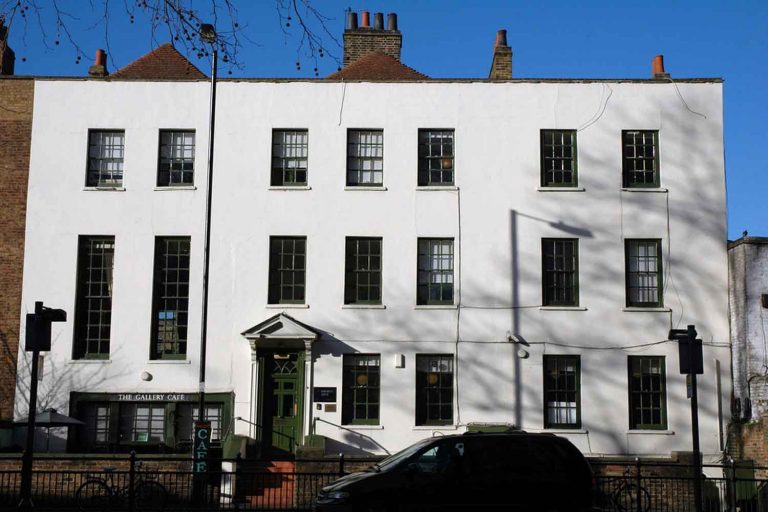Black carriage funeral horses: A proper East End send-off
The history of horse-drawn funerals and why an increasingly diverse East End is the key to their endurance.
Every so often, the sound of traffic ceases on our busy East End Streets. Noises from car horns and exhaust pipes are replaced by the rhythmic clopping of horses’ hooves striking the pavement in unison, leading a slow cortège of carriages and motor vehicles winding around the streets of East London.
Horse-drawn funerals date back to medieval times when grand heraldic funeral chariots were pulled by several large horses, as was done in the funeral of Elizabeth I in 1603. The practice gradually became more accessible to the middle classes in the 17th and 18th centuries, and it was in the Victorian era when they were at the peak of their popularity.
Though horse-drawn funerals are often portrayed in Charles Dickens’ novels and subsequent adaptations, the author was famously critical of the funeral and undertaking trade and wrote several articles damning the spectacles for being ugly, indulgent and exploitative.
The practice started to disappear during World War I and World War II when supply lines of the traditional Friesian horses from the Netherlands were cut off and the men who would usually conduct and furnish the ceremonies were sent to fight on the front line.
Horse-drawn funerals were gradually replaced with cheaper and more fashionable motor hearses in the 1920s-30s, and nowadays there are few areas outside the East End where the tradition endures.
When Ronnie Kray was buried in 1995, 60,000 people lined Old Bethnal Green Road to catch a glimpse of the gangster’s horse-drawn hearse.
T Cribb & Sons carriage masters in Beckton, East London, is the only remaining funeral director in the UK with its own authentic working yard including stables, lorries and carriages.
When it opened its original site on Rathbone Street, Canning Town, in 1881, there were five independent funeral directors on its road alone. Today, it is the only independent family funeral director in all of Newham and organises more than 500 funerals every year.
Historic museum artefacts are displayed in its newly-refurbished head office, complete with chandeliers and a light oak-panelled interior. Victorian mourning dresses, death masks and memoriam cards are encased in glass cabinets; reminders of the centrality of death and mourning to life in the nineteenth century.
Cremation saw a spike in popularity after the Catholic Church relaxed attitudes towards the practice in the 1960s, though it has been steadily adopted in the UK since the 1930s and is associated with broader trends for ‘simpler’ funerals.
John Harris, great-grandson of T Cribb & Sons’ founder and current director, says that traditional horse-drawn funerals are ‘drifting’ out of British culture.
According to Harris, as white British families move out of the East End to Essex and become more dispersed, the number of horse-drawn funerals that typically start at the family home and end in the local pub is declining within this community.
It is the newer migrant communities that are keeping the tradition alive, adapting it to their needs, beliefs and tastes.
The diverse mix of Hindu, Sikh, Chinese, Caribbean, and Traveller communities, among others in East London, place greater importance on mourning rituals than many white British families, and the tradition is evolving accordingly.
As Harris says: ‘The only reason the tradition has endured in the East End is that we’ve had a cultural change.’
For instance, in many of these cultures, the colour of mourning is white rather than black, causing an increased prevalence of white horse-drawn funeral processions in the East End.
At T Cribb, they frequently host white horse-drawn funerals for Christian West African families and Irish Travellers, as well as East London’s Chinese community.
Yet captured in the following photos are four of T Cribb & Sons’ 14 Dutch Friesians, the traditional funeral horses also known as ‘Belgian Blacks’ who are well muscled and known for their kind temperaments.
The honouring of traditional rituals and dress means that the entourage appears almost exactly as it would have done in the Victorian era and is a mark of the history kept alive on our East End streets.
And though the plumes and pageantry might look out of place against the backdrop of pebbledash housing estates and traffic cones, such a public display of respect for the deceased remains a cherished part of East End culture and one that is very much alive today.
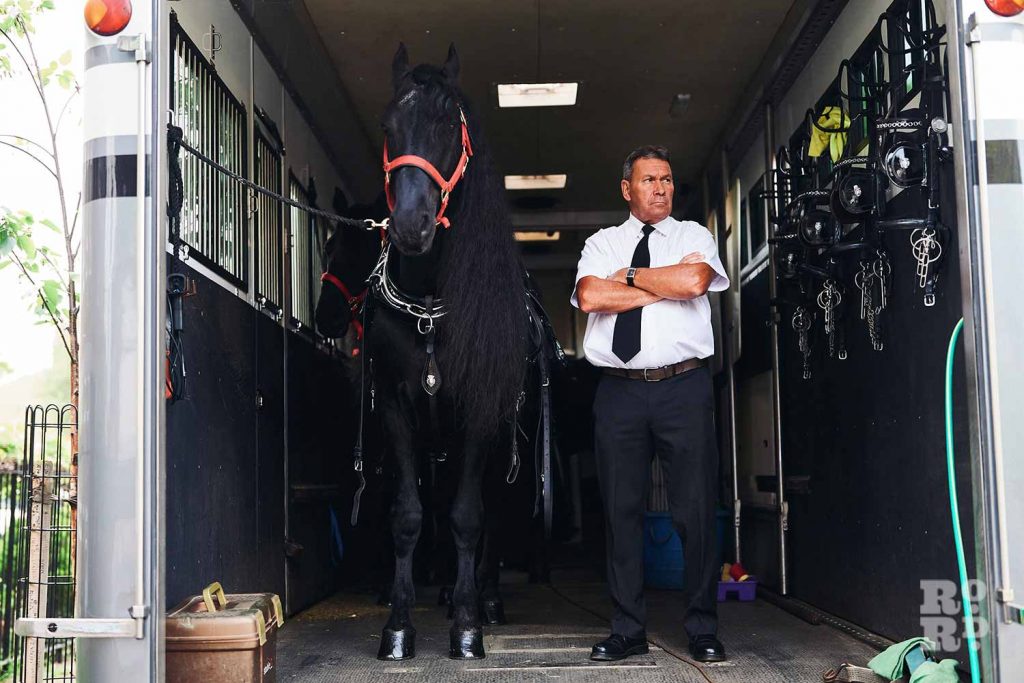
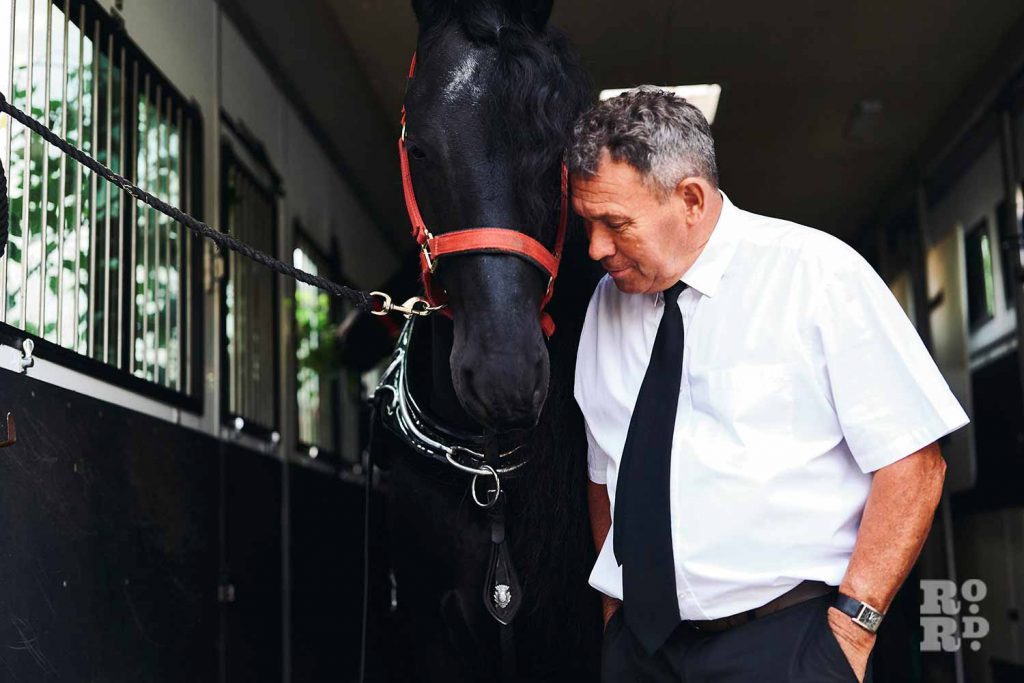
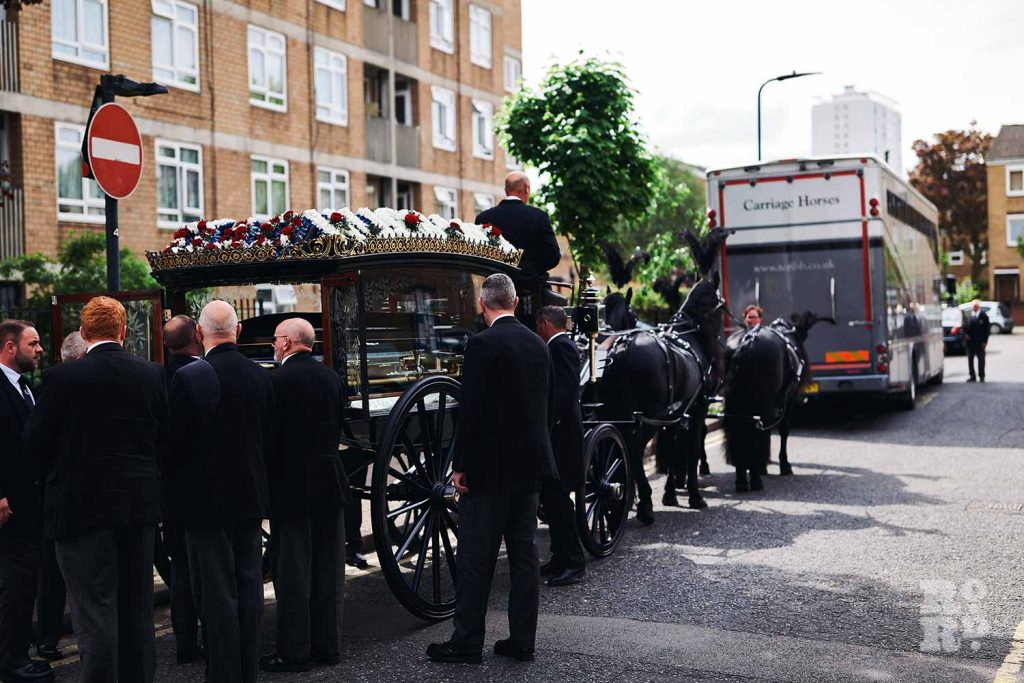
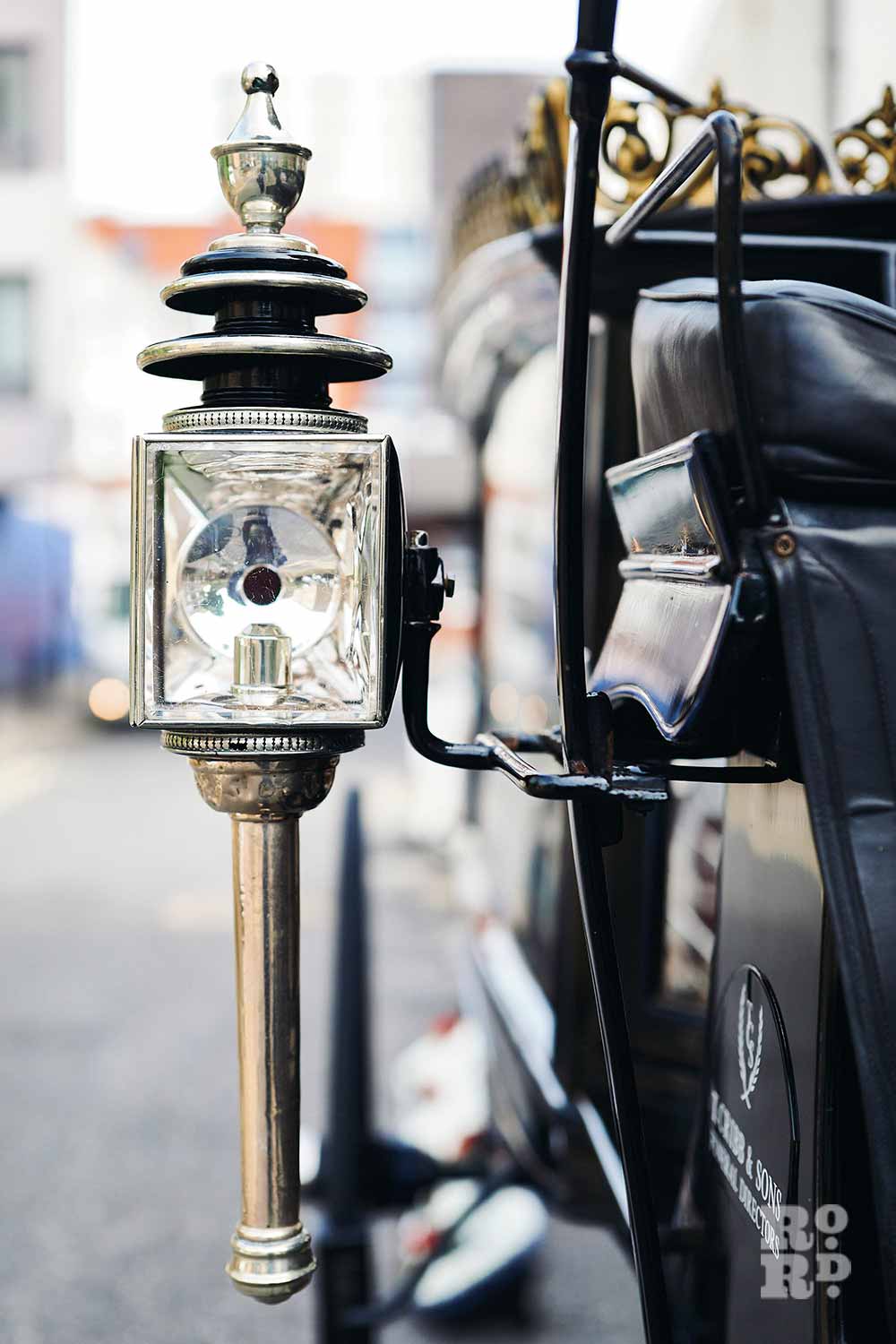
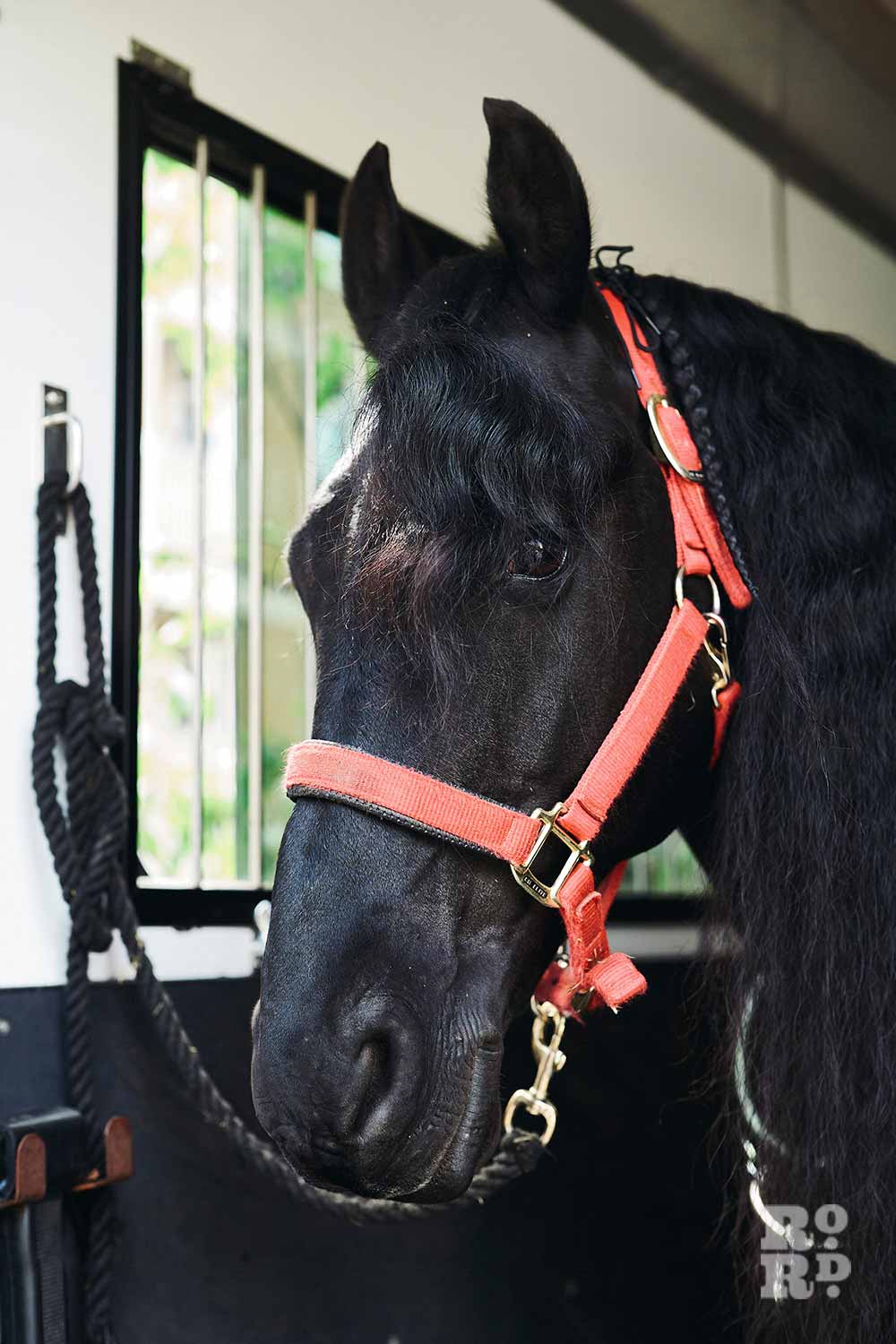
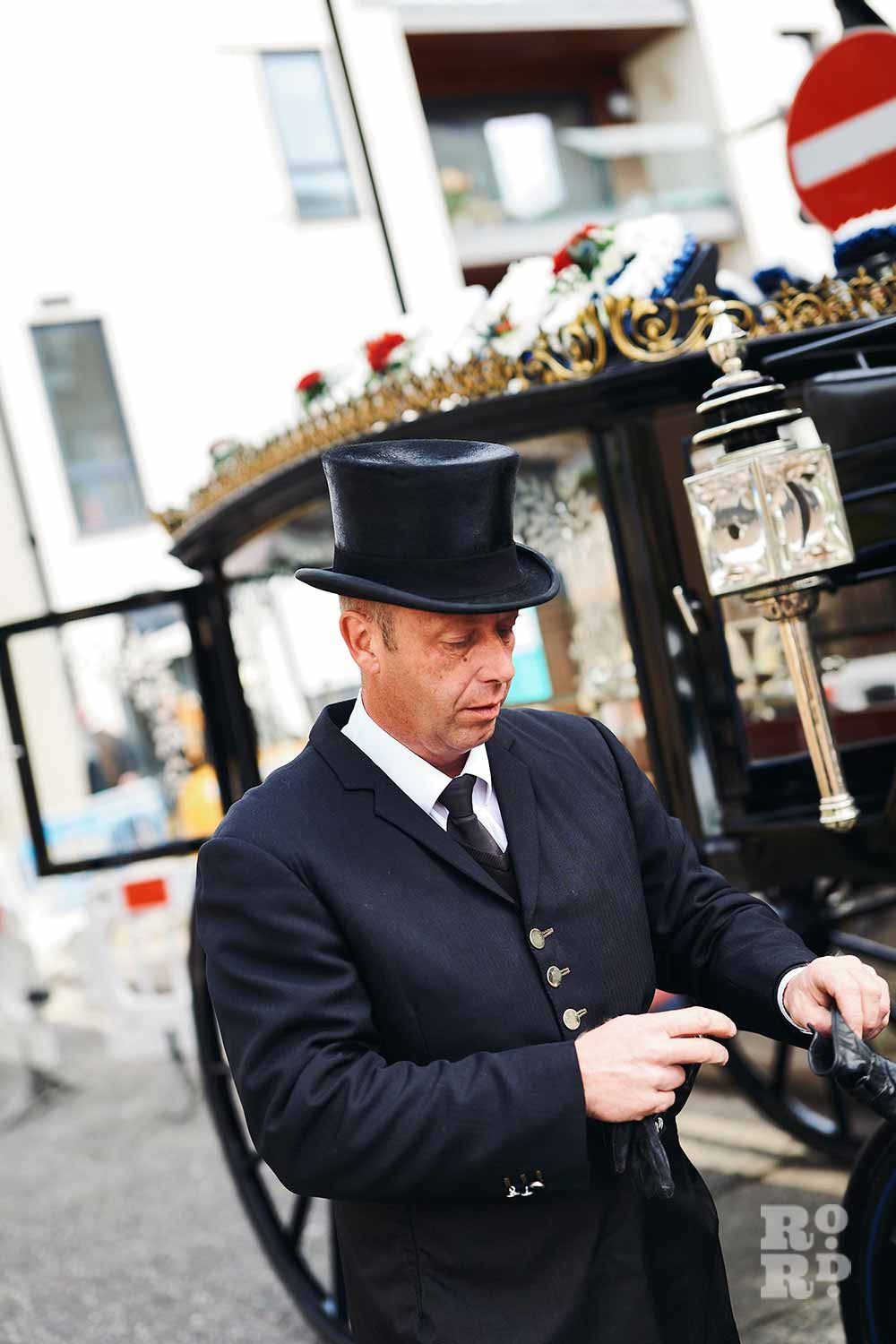
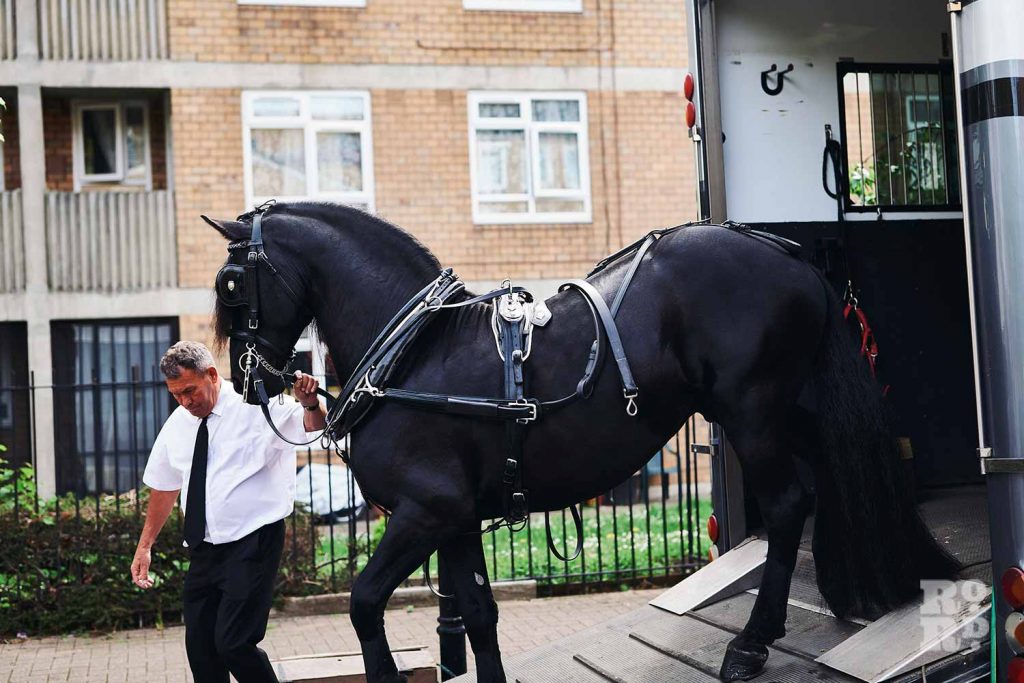
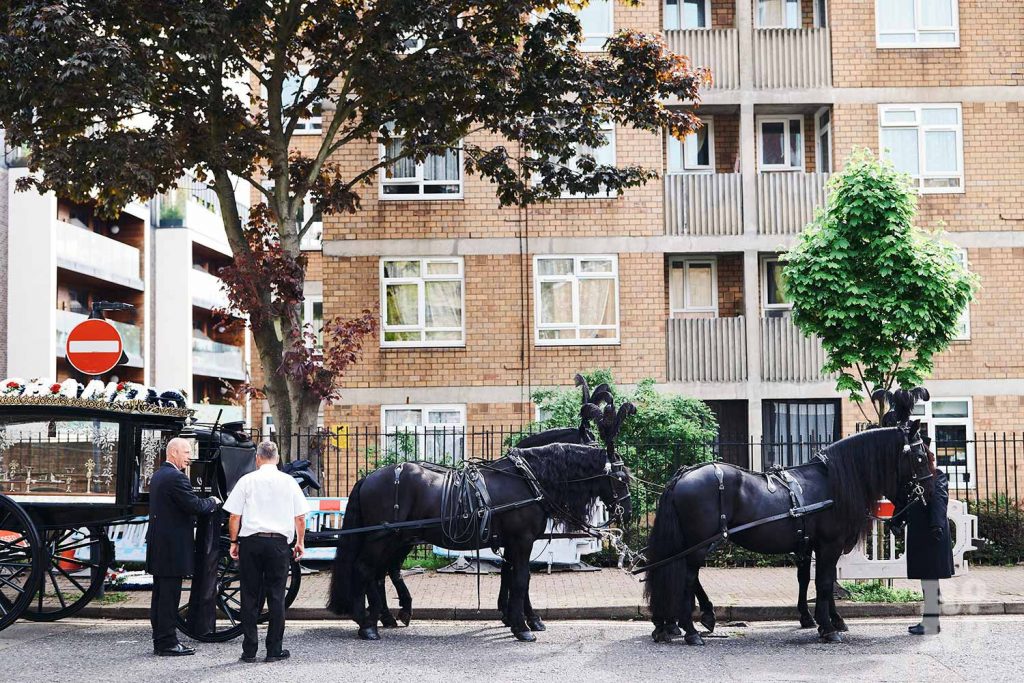
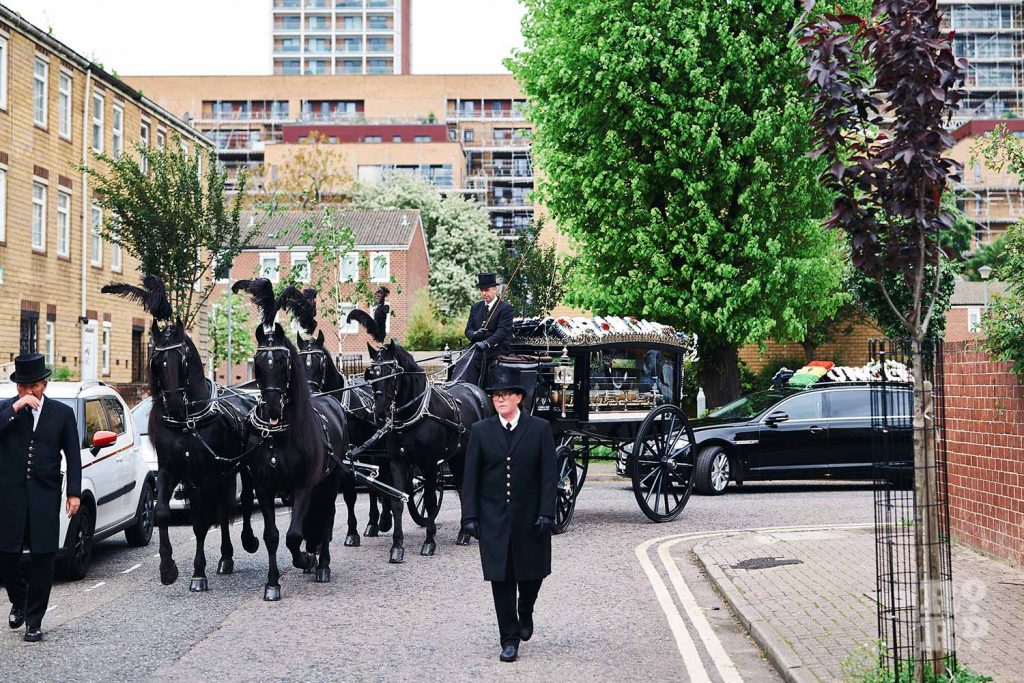
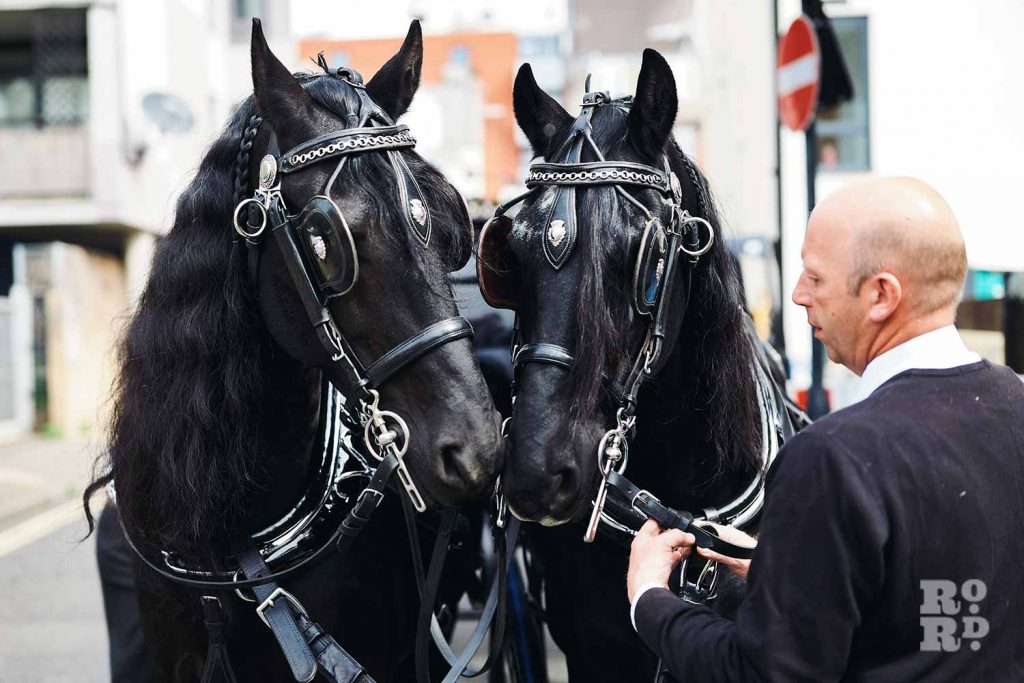
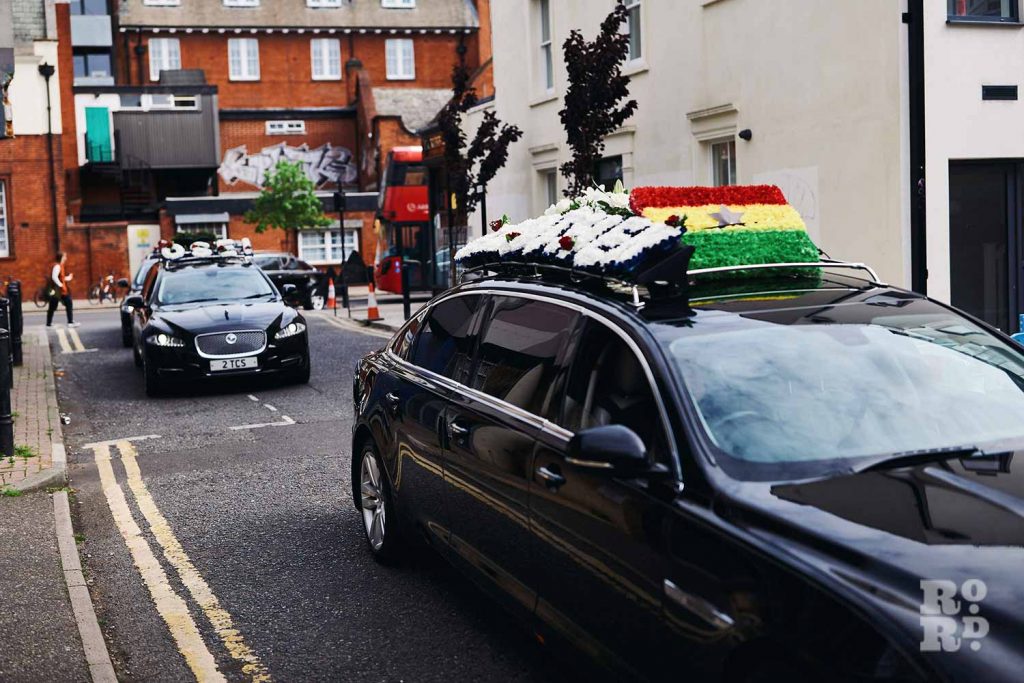
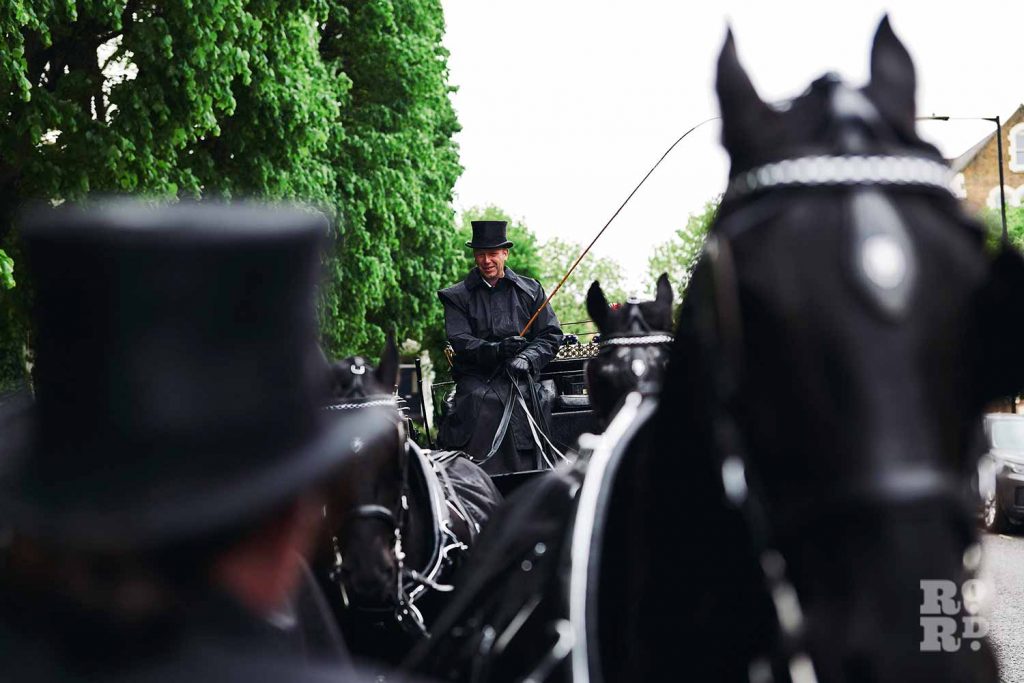
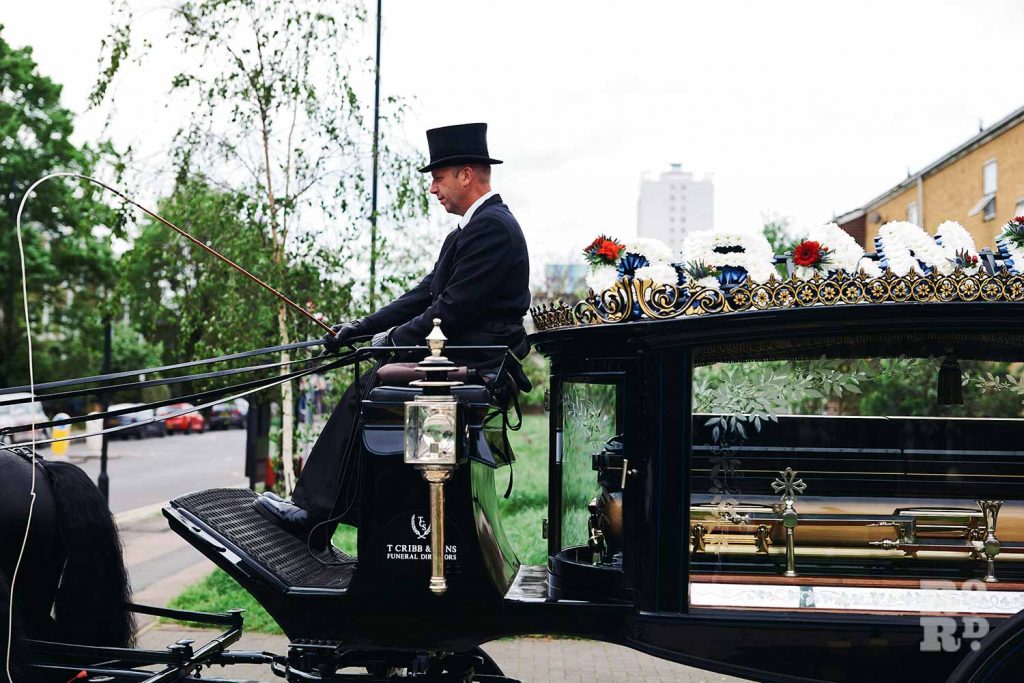
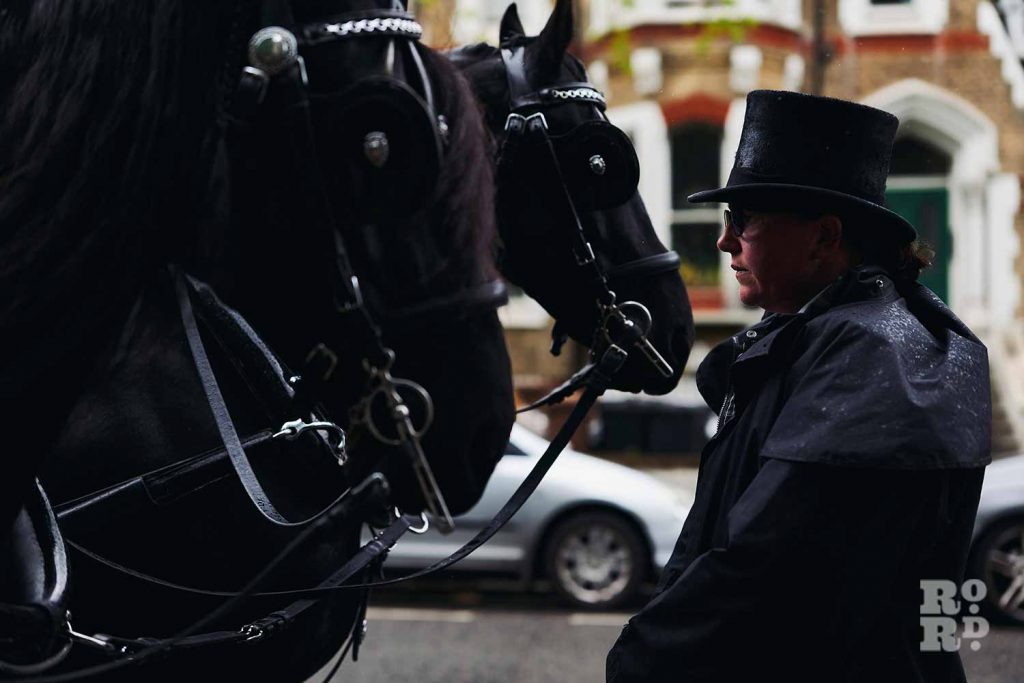
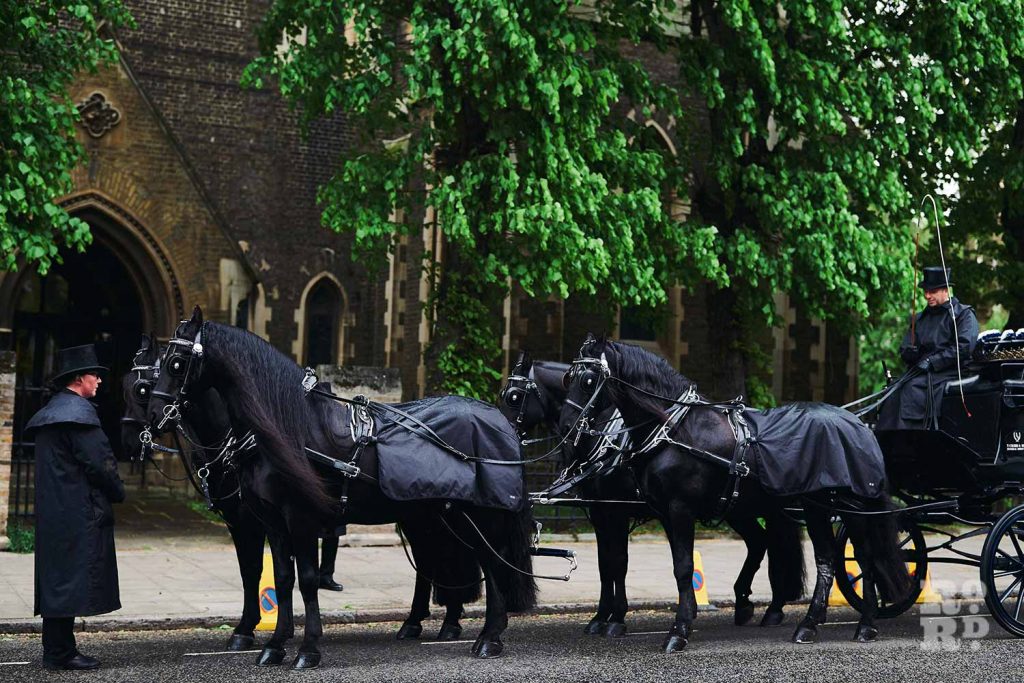
If you liked this piece, you might enjoy our article about bomb damage maps of the East End.

